A Ruler's Guide to Their Types and Usability
Table and Workshop Rulers and Their Utilization

Rulers
The standard Egyptian rule was a cubit long, about 20.7 inches. It was originally divided into seven palms, each palm sub - divided into four digits. it was a hard strip of wood about 2 x 1 inches. In section with a 45 degrees chamfer on one edge.
The romans had many practical purposes for using the foot measurement for the foundation of buildings. Medieval rules were graduated wooden strips. The earliest known two fold rule is dated to 1613. The four fold pocket rule was developed in the late eighteenth century and the two foot length became the standard type.
Bench Ruler
Size: 300mm to 2m
Material: Hardwood
Use: To measure a workplace or a medium sized property
Bench rules are straight wooden rules made in one piece. They normally have simple imperial or metric graduations. Stand the rule on its edge for accuracy. Laid flat, its thickness can lead to errors.
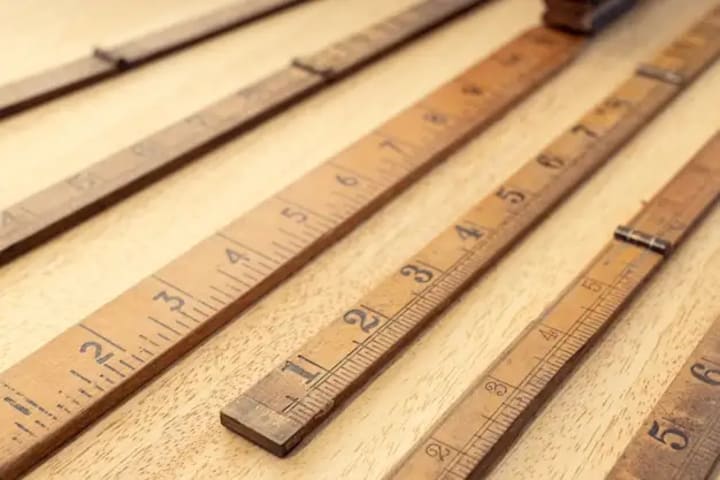
Straight Edge Ruler
Size: 300mm to 2m
Material: Steel
Use: For straight line cutting and flat borderline cutting/marking
The straight edge is a parallel sided strip of heavy steel, which is beveled on one edge. The bevel is used to cut or scribe against. While the other edge can be used to test for flatness.

Steel Ruler
Size: 150mm to 2m
Material: Steel
Use: To determine or estimate the size of a workpiece
A standard quality steel rule is a very accurate tool for measuring and laying out work. not only are the graduations only precise, but being steel the ruler can also be very thin and therefore reduce errors in marking out.
A steel rule is essential for any kind of metal work and is also useful tool in the wood work shop. Steel rulers have metric or imperial graduations, or can have a fusion of both. The rulers will usually be graduated on two edges and occasionally on both sides, with increasingly smaller divisions of the basic measure.
A combined metric and imperial rule is the most useful. The steel ruler can also be used as a straight edge. Steel rulers should be stored very carefully. If the edges are blunt or damaged it will lead to inaccuracies. These types of rulers usually have a hole on the near end of the ruler, for hanging on the wall.

Circumference Ruler
Size: 900mm to 1.2m
Material: Steel
Use: To calculate the circumference of round stock
The circumference ruler is usually used to calculate the circumference of a disc or cylinder object. One edge has the standard numerical graduations, which is used to measure the diameter of the object. while the other corresponding measurement is shown on the other edge.

Folding Ruler
Size: 300mm to 2m
Material: Wood, Alloy, Steel or Plastic
Use: To determine the size of a workpiece, or survey an area
The folding rule can be used in a confined space where a long rule would be inconvenient. It also overcomes the problem of carrying a long measuring rod to the worksite. both metric and imperial graduations are available on the folding rulers. A single folding rule is made from two pieces, which overlap each other and are jointed at one end to swing apart, thus extending the ruler.
The four fold ruler is the traditional carpenters ruler. It is made from hardwood and is reinforced at the ends with brass. The ruler is made from four strips, hinged in pairs to fold back on one another. These hinged sections are jointed at one end with a brass ruler joint, made by a disc on one end locating between two discs on the other with a river passing through the center of all three.
This allows each section of the ruler to lay side by side when the ruler is closed. The other common variety of folding ruler is the zig-zag ruler. Which is really an extension of the single fold principle. In this case several sections of the ruler are jointed together. Well - made rulers have a catch which holds each unfolded section in line with the next. A folding ruler should be protected from damage. Once a joint hinge becomes strained or loose the rule will be inaccurate.
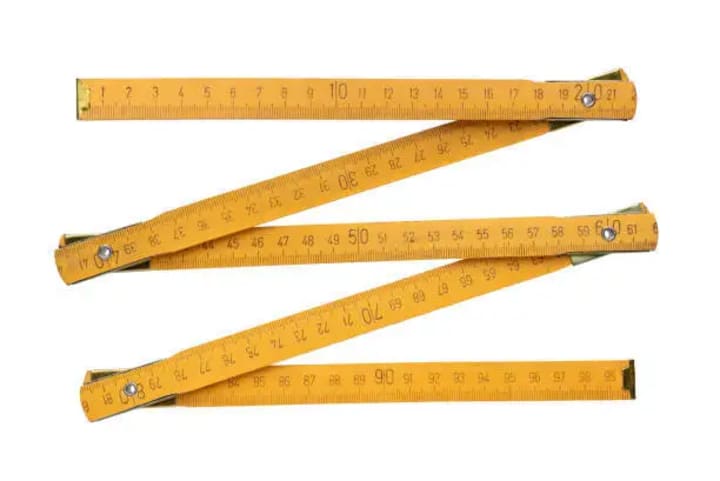
Extension Ruler
Size: 2m to 2.5m
Material: Hardwood
Use: To determine the size of a work piece
This ruler is much like the folding ruler in many of it aspect. The extension ruler is a zig-zag ruler which includes a brass slide for making internal measurements. The slide extends from the first section of the ruler. To measure the internal width of a frame, open the sections of the ruler to fit the gap as closely as possible. Place one end of the ruler against one side of the frame and extend the slide to touch the other side. The slide can also be used as a depth gauge.
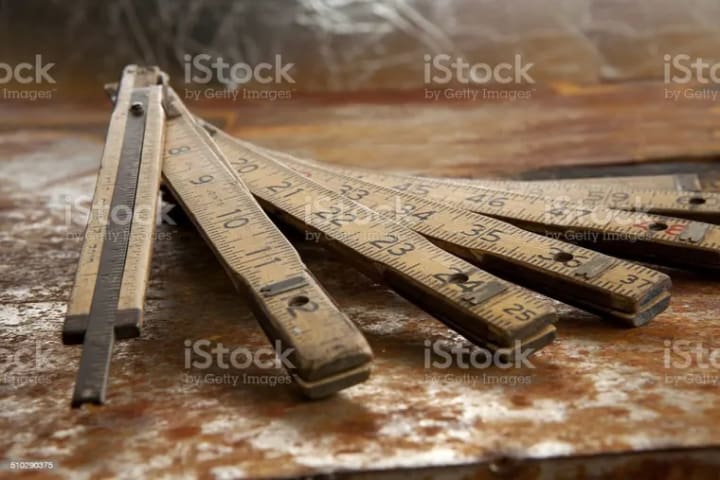
Mason's Ruler
Size: 6ft or 2m
Material: Hardwood or Plastic
Use: To regulate the thickness of mortar joints between masonry units
Mason's rulers are used to check accurate progress during wall building. A wall must be exactly the same height at both ends and the brick courses regulated to correspond with standard window and door frames. There are two types of mason's rulers, The "modular" ruler and the "spacing" ruler. The modular ruler determines how many courses of a modular brick or block, plus its mortar joint, will exactly reach a required height. The spacing ruler gives the spacing of standard bricks to reach a required height with equal joint between. Both rulers have standard numerical graduations on the reverse.

Push - Pull Steel Tape Ruler
Size: 900mm to 5m
Material: Steel, fiber-glass, or plastic
Use: To determine the size of a workpiece or to survey an area
The push - pull steel tape measurement is an extendable steel strip coiled into a container. The tape is spring loaded, so that as soon as it is released it will automatically return to the case. On some cases a lock is provided to hold the tape when extended.
A hook is riveted to the end of the tape to locate at the end of the workpiece so that even a long dimension can be measured single handed. This hook is loosely riveted to the tape and is free to move in and out for a fixed distance. When hooked over an object, it extends by its own thickness so that the measurement can be accurately taken from the end of the tape itself.
Similarly when taking an internal measurement the hook retracts so that the measurement is taken again from the end of the tape. Check periodically that the hook has not become too loose, or you will get a false reading. For external measurements, some cases are fitted with a device which indicates the exact measurements including the case. These kind of measuring tapes are available with both metric and imperial graduations or a combination of both.
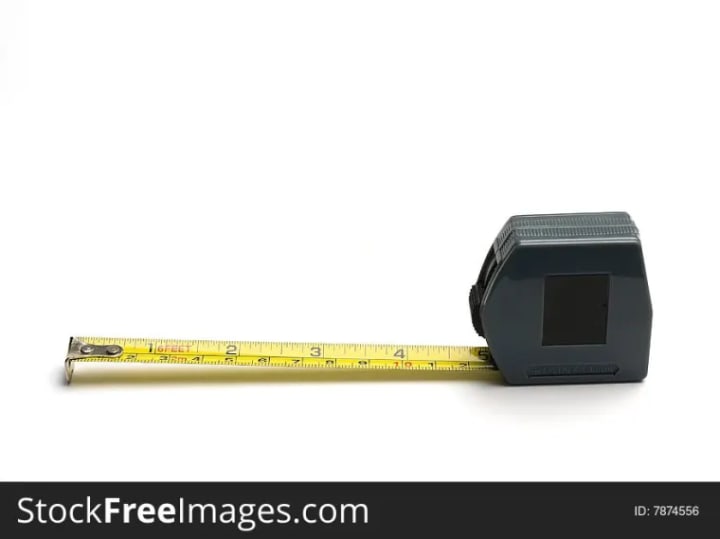
Wind-Up Tape Ruler
Size: 10m to 30m
Material: Tape (steel, line) - Case (steel, plastic, leather)
Use: To determine the size of a workpiece or survey an area
The wind-up tape measure is primarily designed for measuring large dimensions, such as the size of a room. It is a large circular case, or sometimes an open frame, containing a long coiled tape marked with imperial or metric graduations.
The steel tapes are more accurate than the linen type which tend to scratch or shrink. A ring is attached to the end of the tape, which can be hooked over a nail, so that long dimensions can be taken single handed. Remember that the graduations measure from the outside of the ring and the nail should be positioned accordingly.
There is also a hook which hinges out from the ring. This locates over a convenient edge and will automatically align the end of the ring with it. To retract the tape, hinge the winding handle to the open position and crank it clockwise.
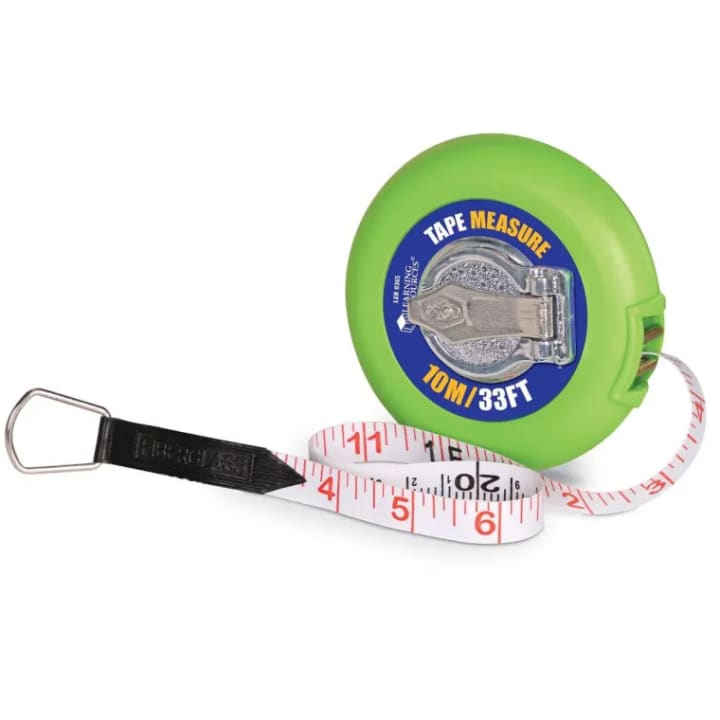
Digital Ruler
Size: 1000ft or 300m
Material: Various/Component
Use: To survey an area
The digital ruler is run over a surface which then displays the length accordingly. It measures curved surfaces as easily as flat. The display is returned to zero by pressing the reset button. By fitting an extension arm the ruler can be used to measure ceilings and the height of walls. Digital rulers are available with metric and imperial graduations.

About the Creator
Temoor Dar
💡Topic: Entrepreneur and Writer💡
♟️Hobbies: Traveling, Poems, Playing Chess and Solving Puzzles♟️
🎂Born: July 7, 1991🎂
📍Born in Stockholm, Sweden, and now a Londoner since 1996📍
📚Lifelong Learner📚
🌟Wisdom from Mentors🌟






Comments
There are no comments for this story
Be the first to respond and start the conversation.